Himalayan Newt
- March 15, 2024
- 0 comment
Himalayan newt, scientifically known as Tylototriton verrucosus, is a captivating species of salamander native to the mountainous regions stretching from Northeast India and Nepal through Bhutan and possibly into Myanmar. This amphibian is particularly known for its distinctive appearance and unique habitat preferences, which have fascinated herpetologists and conservationists alike. This article delves into the biology, ecology, conservation status, and challenges facing the Himalayan newt, aiming to provide a comprehensive overview of this remarkable creature.
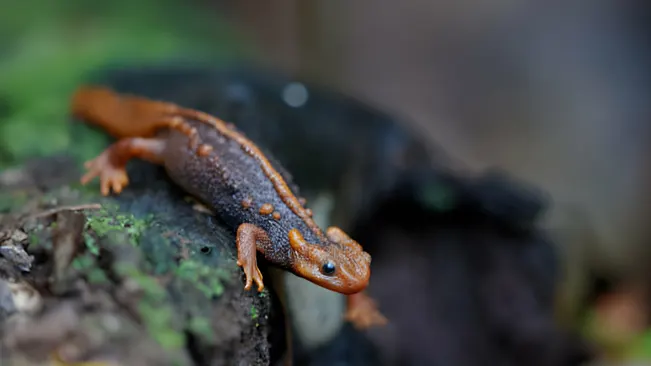
Himalayan Newt Characteristics
| Category | Details |
|---|---|
| Scientific Name | Tylototriton verrucosus |
| Common Names | Himalayan Newt, |
| Classification | Kingdom: Animalia, Phylum: Chordata, Class: Amphibia, Order: Urodela, Family: Salamandridae |
| Size | Typically 15 to 20 cm in length |
| Weight | Varies with size, generally light due to small size |
| Lifespan | Generally around 10 to 20 years in the wild, potentially longer in captivity |
| Habitat | Moist environments near still or slow-moving bodies of water at elevations between 1,200 to 3,000 meters, such as ponds, swamps, and rice paddies |
| Distribution | Northeast India, Nepal, Bhutan, and possibly Myanmar |
| Diet | Carnivorous, feeding on a variety of aquatic invertebrates, small fish, and even other amphibians |
| Behavior | Nocturnal; spends the day hidden under rocks or vegetation. Aquatic during breeding season but more terrestrial otherwise |
| Reproduction | Breeds in water. Females lay eggs individually or in small clumps on aquatic plants. The breeding season is triggered by the onset of the monsoon |
| Conservation Status | Near Threatened due to habitat loss, pollution, climate change, and collection for the pet trade |
| Conservation Efforts | Habitat preservation, regulation of trade, and raising public awareness about their plight |
| Cultural Significance | Primarily of interest to herpetologists, conservationists, and nature enthusiasts. Its unique appearance and habits contribute to biodiversity and ecological understanding |
| Challenges | Combating habitat fragmentation, pollution, and the impacts of climate change are significant challenges |
Appearance

Coloration
The skin color of the Himalayan newt can vary significantly across individuals, ranging from dark brown to vibrant shades of orange or red along the dorsal side, creating a striking appearance. This vivid dorsal coloration starkly contrasts with the softer, usually lighter-colored belly, adding to the species’ distinctive visual appeal and helping it blend into its natural habitat while also signaling to potential mates and predators.
Size
Adult Himalayan newts can reach lengths of approximately 15 to 20 cm from head to tail, positioning them among the larger species within their genus, Tylototriton. This notable size not only distinguishes them within their natural habitats but also emphasizes their robustness and adaptability in the diverse ecosystems of the Himalayan region.

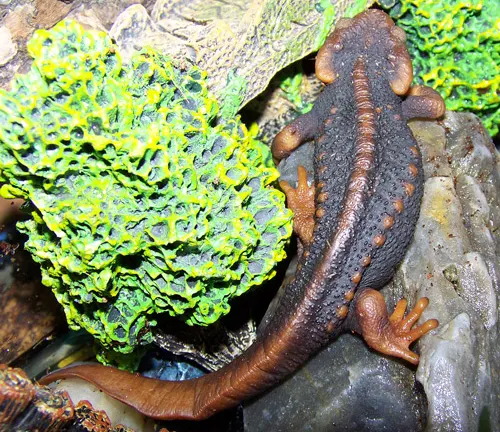
Body Shape
The Himalayan newt possesses a robust and somewhat elongated body, a physical adaptation that greatly benefits its aquatic lifestyle, particularly evident during the breeding season. This body shape facilitates efficient swimming and maneuverability in water, enabling them to navigate through their aquatic environment with ease while foraging or seeking mates.
Head
The head of the Himalayan newt is notably broad and flat, featuring a distinct ridge that runs between the eyes, a unique physical trait that significantly contributes to their characteristic “crocodile” appearance. This distinctive head shape not only aids in their sensory perception but also enhances their camouflage among the forest floor and aquatic vegetation, blending seamlessly into their natural habitat.

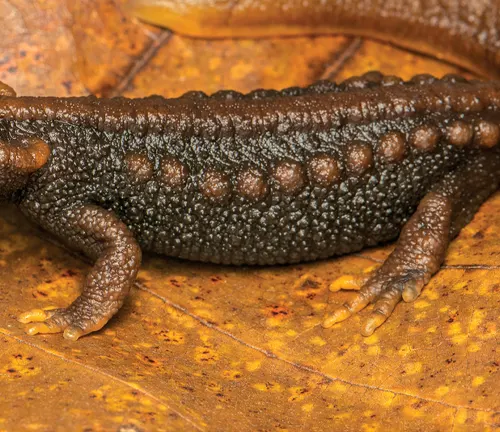
Limb Structure
The Himalayan newt is equipped with strong, well-developed limbs, making it adept at navigating both terrestrial and aquatic environments with remarkable ease. The feet, partially webbed, play a crucial role in enhancing their swimming capabilities, allowing them to move through water efficiently while also providing the necessary support for terrestrial locomotion.
Biology and Description
The Himalayan newt is characterized by its striking appearance, which includes a robust body, a rough, warty skin, and a vibrant coloration that ranges from dark brown to bright orange or red along its dorsal side. Adults can grow up to 15-20 cm in length, making them one of the larger species within their genus. A distinctive feature of this species is the ridged vertebral column that runs along the back, adding to their prehistoric appearance.
Habitat and Distribution
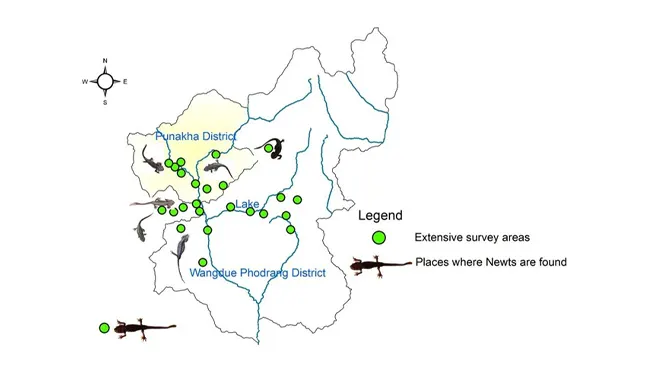
These amphibians are found in the cool, mountainous terrains of the Himalayas, at elevations ranging from 1,200 to 3,000 meters. They favor moist environments and are typically located near slow-moving or still bodies of water, such as ponds, swamps, and rice paddies, which are crucial for their breeding and larval development. The Himalayan newt’s habitat is characterized by a temperate climate, with significant rainfall ensuring the constant availability of their aquatic breeding sites.
Behavior and Ecology
Himalayan newts are predominantly aquatic during the breeding season but adopt a more terrestrial lifestyle outside of this period. They are nocturnal, spending their days hidden under rocks or within dense vegetation to avoid predators and the drying effects of the sun. Diet-wise, they are opportunistic feeders, preying on a variety of aquatic invertebrates, small fish, and even other amphibians.
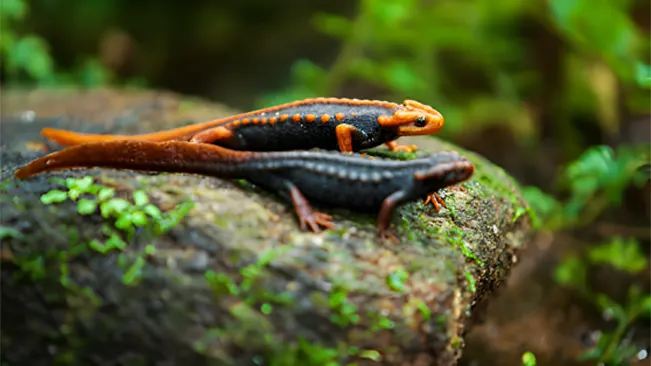
The breeding season is triggered by the onset of the monsoon, during which males and females migrate to their natal ponds or similar aquatic habitats. Courtship involves a series of intricate behaviors by the male to attract a mate, culminating in the deposition of sperm packets which the female picks up to fertilize her eggs. Females lay eggs individually or in small clumps on aquatic plants, where they remain until hatching.
Nocturnal Activity
Himalayan Newts are primarily active at night, which helps them avoid predators and minimize water loss during the dry and sunny parts of the day.
Seasonal Habitat Preference
They show a distinct preference for aquatic environments during the breeding season for reproduction purposes. Outside of this period, they become more terrestrial, although they still remain in close proximity to moisture and water sources.
Breeding Migration
At the onset of the monsoon season, Himalayan Newts migrate to breeding sites, which are typically still or slow-moving bodies of water like ponds and swamps.
Courtship Behavior
During the breeding season, males perform specific courtship displays to attract females. This may include body movements, leading females to sperm packets (spermatophores) that the males deposit.
Egg Laying
Females lay eggs individually or in small clumps on aquatic plants. The choice of laying site is critical for the protection of eggs from predators and environmental factors.
Diet and Feeding
They are opportunistic carnivores, feeding on a wide range of aquatic invertebrates, small fish, and even other amphibians. Their feeding strategy involves both active hunting and ambush predation.
Predator Avoidance
Himalayan Newts use their cryptic coloration to blend into their surroundings and avoid detection by predators. They also seek refuge under rocks or in dense vegetation during the day.
Social Interaction
Outside of the breeding season, Himalayan Newts are generally solitary. However, during breeding, they gather in significant numbers in suitable aquatic environments.
Adaptability
They have shown adaptability to changing environments, including human-altered landscapes like rice paddies, although these changes pose significant threats to their populations.
Defensive Behavior
When threatened, Himalayan Newts can assume a defensive posture to make themselves appear larger and more intimidating to potential predators.
Conservation Efforts and Challenges
Conservation efforts for the Himalayan newt are focused on habitat preservation and the regulation of trade. Protecting their breeding ponds and surrounding habitats from pollution and development is critical. There is also a need for more comprehensive research to fully understand their population dynamics, distribution, and ecology to inform effective conservation strategies. Additionally, raising public awareness about the species and its plight is essential to garner support for conservation initiatives.
Conservation Status
The Himalayan newt is listed as “Near Threatened” by the International Union for Conservation of Nature (IUCN). Their populations are believed to be declining due to a combination of factors including habitat loss and degradation, pollution, climate change, and collection for the pet trade. The fragmentation of their habitat, primarily due to agricultural expansion and urban development, poses a significant threat to their survival.
Different Species
Tylototriton verrucosus (Himalayan Newt or Crocodile Newt): Found across Northeast India, Nepal, Bhutan, and Myanmar, this species is known for its rugged, warty skin and a distinctive vertebral ridge.
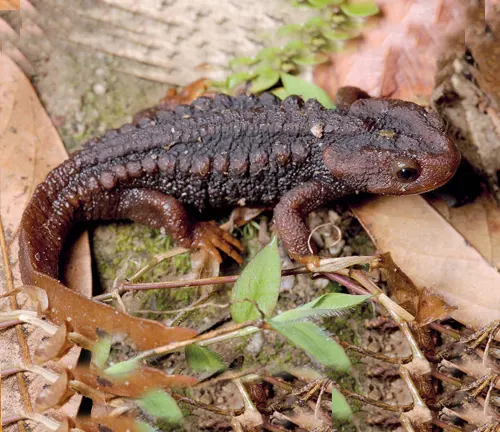

Tylototriton himalayanus (Himalayan Crocodile Newt): Native to the Himalayas in parts of India and Nepal, it has been distinguished from T. verrucosus based on specific morphological and genetic differences.
Tylototriton taliangensis (Yunnan Knobby Newt): This species inhabits China and possibly northern Myanmar, preferring mountainous regions and is recognized by its unique knobby skin texture.
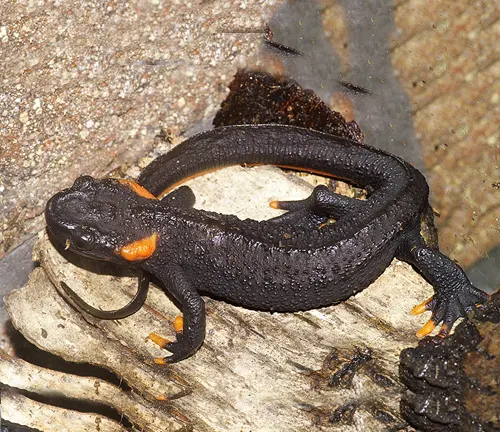

Tylototriton shanjing (Emperor Newt or Mandarin Newt): Originating from Yunnan province in China, it boasts a vividly colorful appearance, making it a popular yet sensitive choice for the pet trade.
Tylototriton ziegleri (Ziegler’s Crocodile Newt): Found in Vietnam, Ziegler’s crocodile newt is one of the more recently described species, adding to the genus’s diversity.
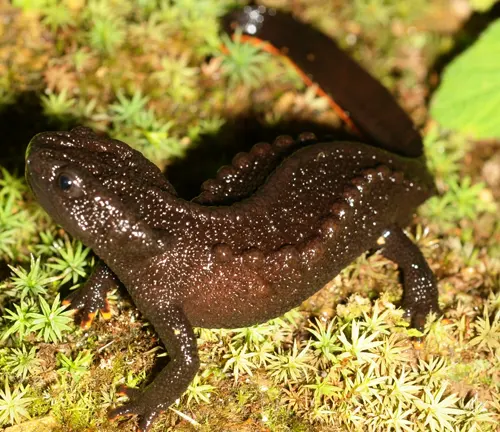
Conclusion
The Himalayan newt represents a fascinating yet vulnerable component of the Himalayan ecosystem. Efforts to conserve this species are not only crucial for their survival but also for the preservation of the broader biodiversity of the region. Continued research, coupled with effective conservation action and public engagement, is essential to ensure that future generations may also marvel at these remarkable amphibians.
Frequently Asked Questions (FAQs)
- 1. What exactly is a Himalayan newt?
A Himalayan newt, specifically known as Tylototriton verrucosus, is a species of salamander native to the Himalayan region, including parts of Northeast India, Nepal, and Bhutan. They are known for their distinctive appearance, with rough, warty skin and a unique dorsal ridge.
- 2. Are Himalayan newts and salamanders the same thing?
Yes and no. Himalayan newts are a type of salamander. While all newts are salamanders, not all salamanders are newts. Newts are distinguished by their life spent both in and out of water and their textured skin.
- 3. How big do Himalayan newts get?
Adult Himalayan newts can reach lengths of up to 15-20 cm, making them one of the larger species within their genus, Tylototriton.
- 4. What do Himalayan newts eat?
Himalayan newts are carnivorous, feeding on a variety of aquatic invertebrates, small fish, and occasionally other amphibians. Their diet changes as they grow, with larvae feeding on smaller prey compared to adults.
- 5. Where can Himalayan newts be found?
They inhabit the cool, temperate regions of the Himalayas, at elevations ranging from 1,200 to 3,000 meters. They prefer moist environments near slow-moving or still bodies of water.
- 6. Are Himalayan newts endangered?
The Himalayan newt is listed as “Near Threatened” by the IUCN. Their populations are facing threats from habitat loss, pollution, climate change, and the pet trade.
- 7. Can I keep a Himalayan newt as a pet?
While it is possible, keeping Himalayan newts as pets is discouraged due to their conservation status. Additionally, they require specific conditions to thrive that can be challenging to replicate in captivity.
- 8. How do Himalayan newts reproduce?
These newts breed during the monsoon season. Males perform a courtship display to attract females, who then lay eggs in water. The eggs hatch into aquatic larvae before undergoing metamorphosis into adults.
- 9. What are the main threats to Himalayan newts?
The main threats include habitat destruction due to urban development and agriculture, pollution, climate change, and collection for the pet trade. Conservation efforts are crucial for their survival.
- 10. How can I help Himalayan newts?
Supporting conservation initiatives and organizations working to protect Himalayan newt habitats is a great way to help. Additionally, educating others about the importance of these amphibians and the threats they face can contribute to their conservation.

Jack Williams
Forestry AuthorI'm Jack Williams, Jack Williams, my expertise in welding and generator technologies extends beyond traditional boundaries. With over 13 years of experience, I have honed my skills in a range of heavy-duty equipment, focusing particularly on welding and power generation. My passion for nature and commitment to ecological sustainability inform my approach to work. I emphasize safety, efficiency, and staying current with technological advancements. Beyond my technical skills, I am dedicated to sharing knowledge and fostering environmental awareness, aiming to contribute positively to both the welding and generator operation industries.

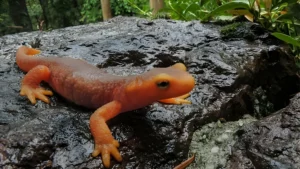
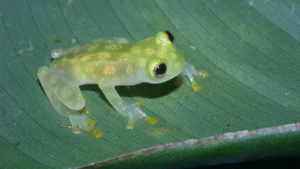

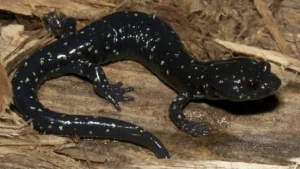
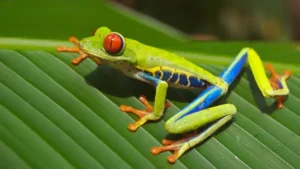
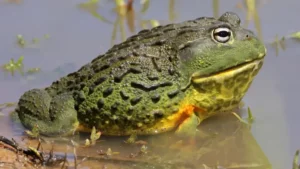
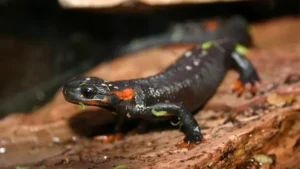
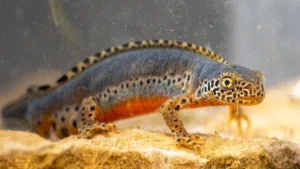
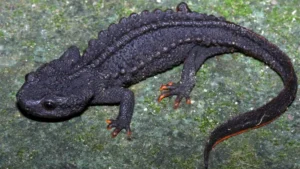

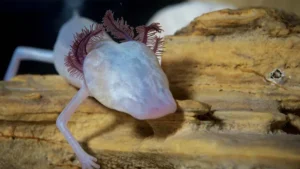

Leave your comment